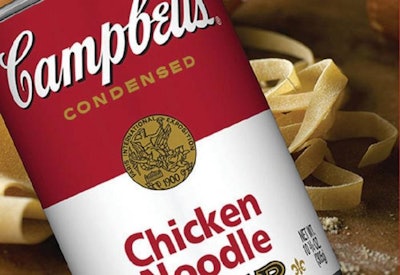
A somewhat surprising voice has joined the call for mandatory labeling of GMOs (genetically modified organisms) in food products—a potential mandate that may extend to pet food products, too. In January, food giant Campbell Soup Co., at odds with most of its competitors and the rest of the human food industry, declared its support for “mandatory national labeling of products that may contain GMOs.” Taking it a step further, the company is now voluntarily labeling its products with a prominent statement, “Partially produced with genetic engineering,” according to Heather Clancy, senior writer for Greenbiz.com.
Much of the US human food industry—and some organizations affiliated with the pet food industry, such as the Pet Food Institute (PFI) and American Feed Industry Association (AFIA)—has been calling for federal regulations about GMO labeling to circumvent and/or over-ride the growing number of state legislative initiatives, each with its own set of rules that can prove costly and difficult to comply with.
Yet the federal solution sought by these entities, including one formed in 2014 called the Coalition for Safe Affordable Food (PFI and AFIA are both members), is to have one nationwide, consistent set of standards and rules for voluntarily labeling products as non-GMO. Thus, Campbell’s push for mandatory labeling of products that do contain GMOs represents quite a break from this philosophy.
Campbell is positioning its new program as part of the company’s “Consumer First” mindset, but it is also a bold move for getting ahead of potential mandates and the rising tide of consumers and advocacy groups calling for mandatory labeling. That tide is what has spurred all of the new state legislation or attempts to pass such initiatives, and it is not ebbing any time soon.
As part of the program, Campbell has launched a new website, WhatsInMyFood.com, on which consumers can see every ingredient in a given product, why or how each ingredient is included, where most of them come from, where the product is made and even specifics on the product’s packaging. For example, the page for the iconic Campbell’s Chicken Noodle Soup includes sections on the key ingredients (chicken stock, noodles and chicken meat) and how they are made, ingredients for flavor, ingredients for texture and color, genetically modified ingredients, who makes and grows the soup and the packaging.
Campbell has also joined the new SmartLabel program developed by the Grocery Manufacturers Association. Its current roster of more than 30 companies includes parent companies of some pet food players, such as Nestlé and Tyson Foods, so pet food products may one day be part of this pro-consumer initiative.
That would be a smart move on the part of pet food companies, I believe, as would more information on their own websites, packaging and other informational materials. Pet owners have been calling for more transparency from our industry since the 2007 melamine-related recalls; while some companies have responded admirably, consumers still perceive many companies in our industry to be at best stonewalling and at worst to be hiding something. At the very least, non-response (or scripted, opaque responses) to inquiries and concerns is a chief complaint among pet owners.
As a pet food-buying consumer myself, I would welcome a source such as Campbell’s WhatsInMyFood.com. Many pet food companies reproduce their product labels on their websites, but they don’t go that extra step to explain why the ingredients are in the food, where they came from, how and where the product and packaging are made. Though I haven’t bought Campbell’s Chicken Noodle Soup in a while, I grew up eating it; now that I know so much more about it, I might add it to my shopping list again.



















